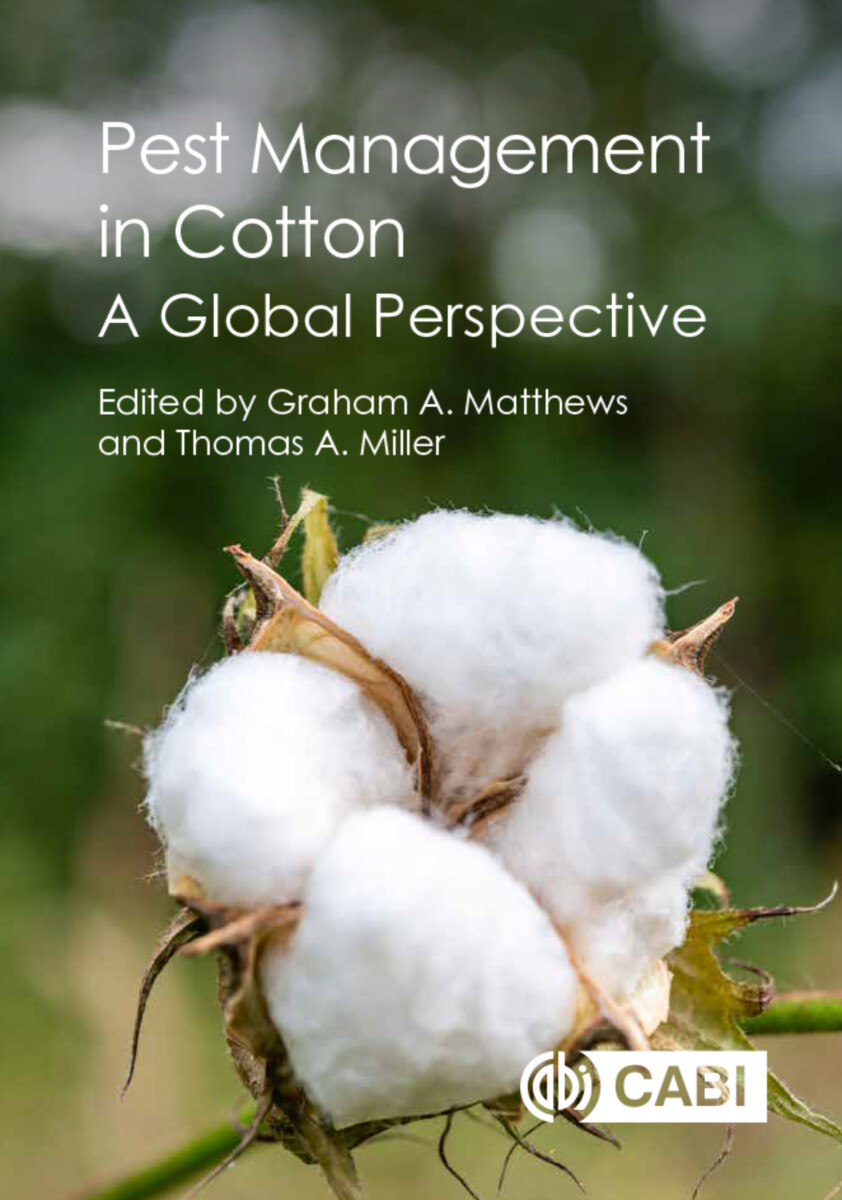Pest Management in Cotton
A Global Perspective
- Publisher
CABI - Published
7th January 2022 - ISBN 9781800620216
- Language English
- Pages 312 pp.
- Size 6" x 9"
This book presents a global overview of the background to, and the current state of, crop protection and pest management in cotton crops. Cotton is one of the most economically important crops in the world and has been grown for centuries, but maintaining high yields of good quality requires sophisticated approaches to pest management.
The introduction and use of pesticides over the decades significantly increased cotton yields but lead to many adverse environmental impacts. Over time, new and alternative insecticides were developed but overuse has enabled pests to develop significant resistance. The development of genetically modified cotton varieties with toxins derived from Bacillus thuringiensis enabled much improved control of lepidopteran larvae, including bollworms, but as the toxins had no effect on sucking pests, farmers had no choice but to continue using insecticides. Also, some of the new cotton varieties developed in recent times have not adapted to different climatic conditions and the quality of cotton fiber declined as a result.
This book shows the need for more research to select cotton varieties with high quality fibers suitable for different cotton growing areas and to develop integrated pest management strategies to minimize the use of pesticides. It also demonstrates the need for an inter-disciplinary approach bringing together plant breeders, entomologists, plant pathologists, agronomists and agricultural engineers to achieve high yields of high quality cotton.
In the future, farmers will need to adopt new technology to determine when and how pesticides are used in conjunction with cultural and biological control strategies.
- Emphasizes the importance of research on growing cotton in a world experiencing climate change
- Demonstrates how crucial crop protection is in achieving high yields of high quality cotton
- Shows how new technology will bring major changes in how cotton is grown in the future
Graham A. Matthews
Graham A. Matthews was a research entomologist in Africa from 1958 -1967 working on cotton in Southern Rhodesia (now Zimbabwe) and Nysasland. He joined Imperial College in 1967 but was seconded to Malawi from 1968-72. He has since been involved with cotton during visits to many countries in Africa, including Egypt, Sudan, Cote D’Ivoire, and to India, Pakistan, Uzbekistan, Turkmenistan, China and Australia. His research has been primarily on pesticide application technology, extending from agriculture to vector control.
Thomas A. Miller
Thomas A. Miller obtained a BA degree in Physics in 1962 and a PhD in entomology in 1967 at University of California, Riverside where he discovered the myogenicity of the American cockroach heart, shocking the field of comparative physiology. After postdoctorals at University of Illinois and University of Glasgow, Scotland, he returned to UC Riverside in 1969 where he pioneered neurotoxicology studies on insecticide mode of action on the housefly, invented a new overnight method of detecting insecticide resistance in pink bollworm and developed a transgenic pink bollworm with a lethal gene provided by Luke Alphey of the UK.


